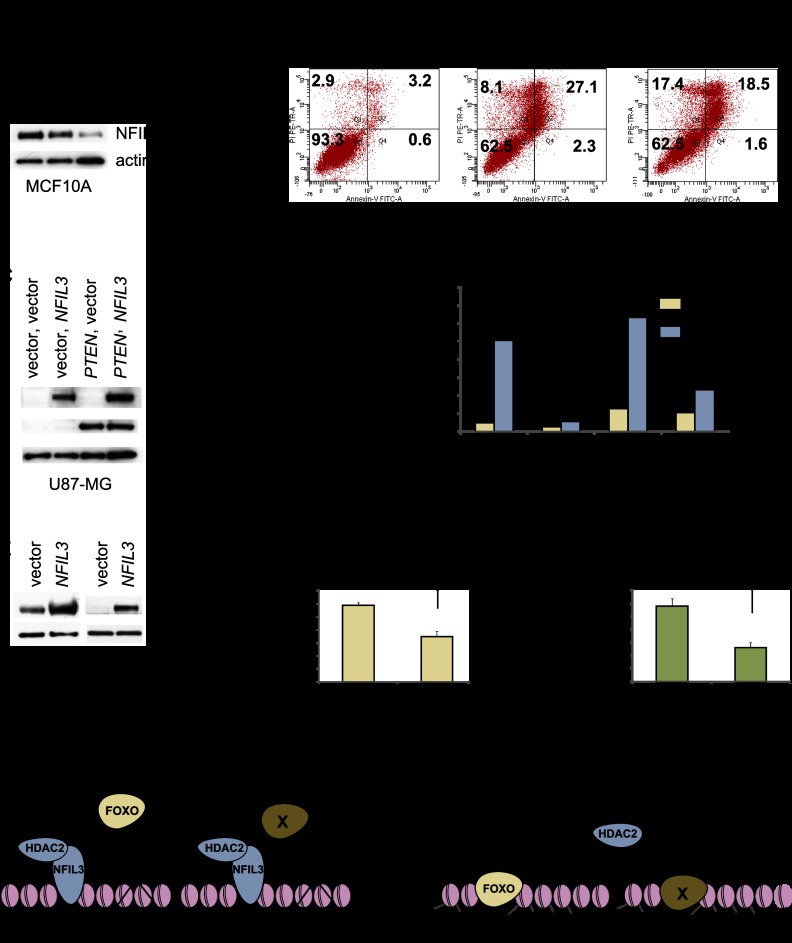Figure 8.
NFIL3 shRNA induces cell death, whereas NFIL3 overexpression inhibits cell death, in immortalized and cancer cell lines. (A) NFIL3 was diminished in MCF10A cells with shRNA (KD1 or KD2); Western blot is shown. (B) MCF10A shRNA-treated samples were subjected to cell viability analysis as described in the Supplemental Material. Loss of NFIL3 induced cell death. (C) Western analysis of U87MG cells that overexpress NFIL3 and/or PTEN. (D) Cell viability analysis was performed on transduced U87MG cells that were treated with water or 250 μM H2O2 for 18 h and analyzed for apoptosis as described in the Supplemental Material. The percentage of apoptotic cells equals the propidium iodide and Annexin V single- and double-positive cells divided by the total number of cells; NFIL3 attenuated apoptosis. (E–G) Cell viability assays were performed with BT549 and MDA-MB-468 cells that overexpress NFIL3 (MSCV-NFIL3). Subconfluent cells were treated with 250 μM H2O2 for 18 h. Cells remaining after treatment were stained with crystal violet, and OD 565 nm was measured to quantify growth inhibition. (H) Model for NFIL3 action: The NFIL3/HDAC2 complex alters histone acetylation and blocks transcription factor association (FOXO and, presumably, other transcription factors, denoted as X) with target genes on chromatin. Data are means ± SEM; n = 3.

